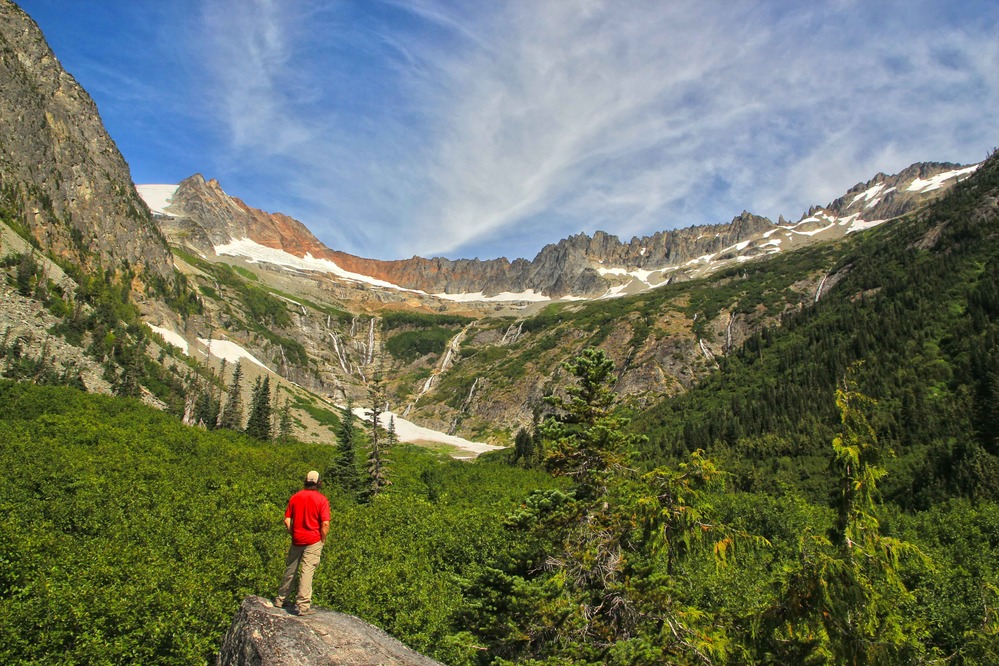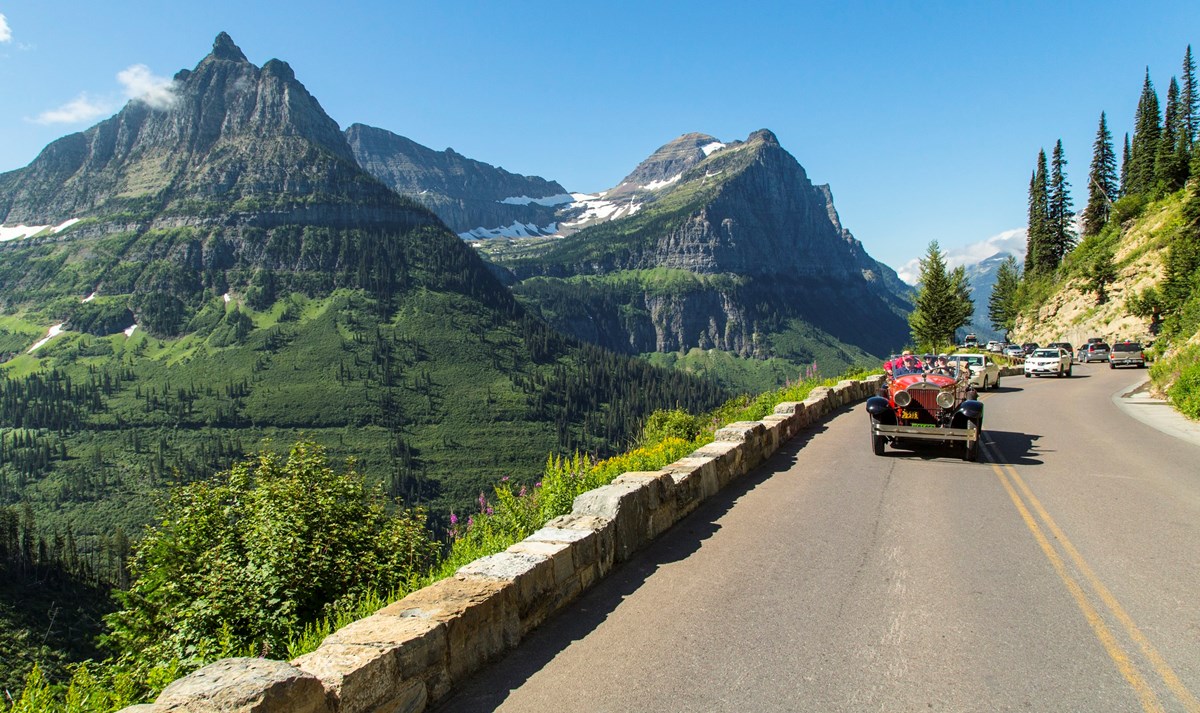Sep 10 – Written By Michael Sparks
Crowding: Part Two
Are the National Parks Too Crowded? It’s Complicated.
There is no one-size-fits-all answer
If understanding the crowding issue requires an almost park-by-park nuance, then necessarily so will implementing any solutions. Each park’s landscape is unique, that’s why it was set aside in the first place, and, thus, will require its own set of solutions. When it comes to protecting America’s most beloved lands, there is no one-size-fits-all answer.
Requiring reservations is a common and sometimes controversial proposal. Critics of reservation systems claim that such a system would have a severe negative impact on local economies because of the reduced visitation, mostly by deterring spontaneous visits. Citing these concerns, Senator Mike Lee of Utah, in the subcommittee hearing, said that he “strongly opposes” a reservation system for Zion National Park.
In 2017, the NPS proposed a reservation system for Arches National Park, also in Utah, but the proposal was killed two years later after backlash from the local business community. As evidence, critics would often cite a 2018 report on potential impacts caused by a proposed reservation system in Arches National Park that estimated a reservation system could cause a “reduction in visitation by 5-10% and a reduction in visitor spending by $11-22 million” in the system’s first year. But the report’s authors also include an important caveat: the estimates “are based solely on existing data and…they do not account for the potential to mitigate impacts through additional education and outreach regarding the proposed system.” If the system succeeds in reducing congestion, the report says, then it may wind up enhancing the economic impact of visits to Arches by making it more enjoyable.
In fact, reservations don’t have to be an all-or-nothing approach. One of the least visited parks in the country, North Cascades in Washington state, has seen visitation increase steadily in the last several years, according to NPS data and North Cascades Deputy Chief of Interpretation, Education, and Volunteers, Katy Hooper. “Covid-19 definitely surged some of those visitation patterns, but we have had a steady increase across the board since 2016,” she said. That has made front-country campgrounds hard to come by. “We’re booked almost every night of the week beginning in June; it used to be that you could just slide in and get a spot. You have to plan now,” she added. To help alleviate congestion, North Cascades began piloting a reservation system–not to enter the park, but just for front-country camping–in 2016 and rolled it out to all front-country campsites this year. “I've had one complaint,” said Hooper, “and even that person said ‘I wasn’t able to get my favorite spot this year, but now I know if I want to schedule that, I can.’”

Further, there is little evidence that spontaneous visits make up any sizable portion of national park visits. Dr. Ryan Sharp, of the Applied Park Science Lab at Kansas State University, and colleagues found that only 6% of Theodore Roosevelt visitors decided to visit the park after arriving in Medora, the local gateway community. When I asked if it was surprising that the study found very few spontaneous visitors, Dr. Sharp said no. “For the most part people plan, very few people have the ability to get in their car and go wherever they want. We’re checking Google Maps/Trip Advisor…that’s planning.” And Hooper, of North Cascades, told me: “People have changed how they recreate. It used to be ‘it’s a nice weekend, I have it off, I’m gonna go camping’ but now people are planning.” Plus, reservation systems typically build in capacity for at least some spontaneity. Rocky Mountain National Park recently implemented a reservation system for some parts of the park during the busy season, but 25% of spots are held back until 5pm the day before.
Many national parks are surrounded by landscapes similar to their own. North Cascades National Park, for example, is surrounded by other park units within the Cascades Range, like Ross Lake and Lake Chelan National Recreation Areas. This “provides an opportunity for people who want to recreate but might not be able to get their backcountry permit at North Cascades; they may not be able to be in the national park specifically, but they can still be in the ecosystem, in the mountain range,” Hooper said.
Leveraging this fact is something the NPS, by its own acknowledgment, needs to and is planning to do more of, Shawn Benge, the National Park Service’s Deputy Director of Operations, said. The Park Service’s “Plan Like a Park Ranger” marketing campaign is intended to, in part, make visitors more aware of “alternative parks that might be less crowded,” Mr. Benge told the Subcommittee on National Parks.
Anybody who has waited in line to enter a park or driven a classic park loop road knows that when we talk about overcrowding, what we’re really talking about, to a large extent, is too many cars. Entrance stations are crowded. Parking lots are full. One can’t help but wonder, are we polluting these parks to death just by visiting them? A 2019 study on pollution in the parks by the National Parks Conservation Association found that 85% of national parks have air that is unhealthy to breathe at times, and in 90% of parks, air pollution, much of it caused by vehicles, is harming sensitive species and habitats.

Of course, this problem of car pollution, one that urgently needs to be solved, is much larger than our parks. And because many parks are in remote locations, building robust mass transit from city to park is not exactly a light undertaking. But, when possible, we need reliable mass transit options for our parks. Saguaro, Cuyahoga, and Indiana Dunes National Parks, for instance, are all relatively close to major metro areas and are more viable options for this.
There is one solution, perhaps, that is common to all parks: money. Money not only for maintenance projects, but for staffing, too. As Senator Angus King, chairman of the Subcommittee on National Parks, noted: “funding has not kept pace with visitation.”
Even the much ballyhooed Great American Outdoors Act, for instance, will be a boon for maintenance projects, but doesn’t include funding for increased staffing. Many parks rely on visitor fees to fund staffing. This way, as visitation goes up, staffing can keep pace. But parks like North Cascades are constrained by federal laws and regulations. “As part of our enabling legislation, we do not have an entrance fee,” Ms. Hooper said, and the park is banned from enacting one.
If we want to be stuck in traffic with Charles Sevenson in 1955, then we should continue to have a misleading discussion about crowding and bury our collective head in the sand. But if we are going to move forward from 1955–that is, if we’re going to improve the visitor experience and resource protection–we need to understand visitation in a more nuanced manner. The NPS needs to collect more detailed and relevant data. We need to be willing to consider a variety of solutions because every park is different. The future of the parks depends on it.